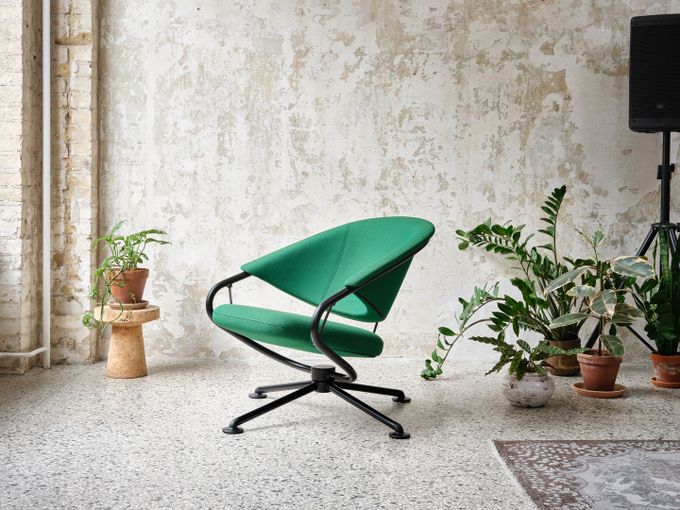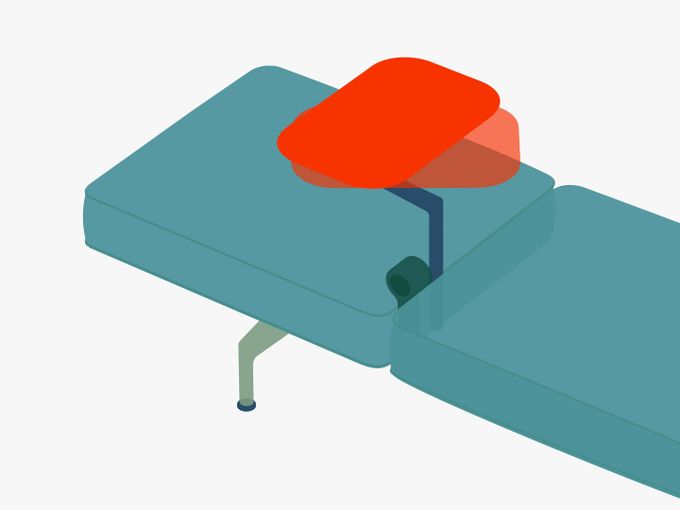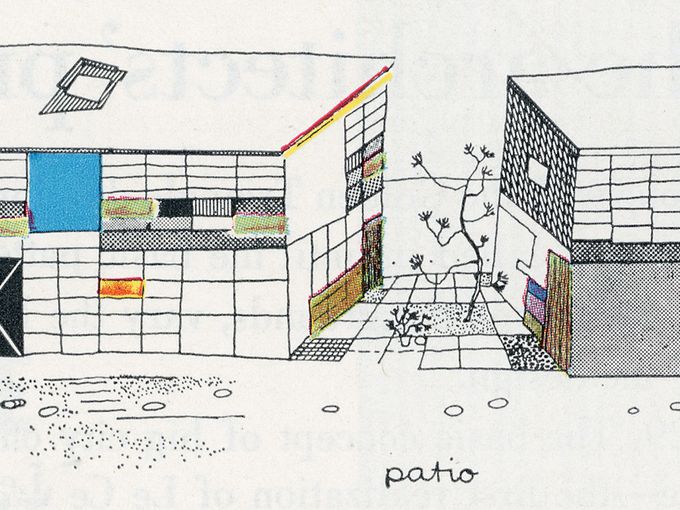10 years of Tip Ton
In conversation with Barber & Osgerby

Over ten years ago, Vitra commenced development of the Tip Ton chair with the British designers Edward Barber and Jay Osgerby and brought it onto the market in 2011. Originally intended for schools and universities, Tip Ton’s iconic shape has made it a universal chair that is also used in many homes. In the interview, the designers reflect on the past decade – and venture a glimpse into the future.
You've spoken a lot about Tip Ton over the past ten years: it’s a hugely popular chair.
Osgerby: At the beginning we were unsure whether it would be a commercial success, although looking at it now, it feels like a very obvious thing. At the time we weren’t sure, particularly when initial prices for tools were coming in and it looked like it might be incredibly expensive to make. It’s complicated as a production piece, because it’s a one-shot form in plastic. It was a risk. We didn’t know whether it would work technically and if it did, then we were unsure as to whether people would become accustomed to it. Vitra were the right people to have on such a project. They had the strength of vision to invest in something that was risky. It was a collaborative process that built trust on both sides. We have gone on to launch subsequent projects with Vitra, the latest being Soft Work , a response to the shift in the way we work. Tip Ton paved the way for a collaborative and respectful working relationship between Barber Osgerby and Vitra.The research and testing for Tip Ton took a long time. How did this compare to other projects you’ve worked on?
Osgerby: It’s truly unlike most of our other projects. Whilst we knew what we wanted to do, we didn’t know whether it was possible. There were question marks over even really simple stuff, like the angle at which the forward tilt should be. There just wasn’t anything else like Tip Ton already out there; it was a new archetype. As a result, we had few points of reference in terms of research to draw upon. Instead we had to make models and jigs, where we replaced the skid length with a piece of wood and angled it, so we could find the exact tilt that worked. There was a huge amount of practical experimentation.Tip Ton was taken up as a universal chair quite early on. Did you expect this when you were designing it?
Barber: We were surprised by how accepted the chair was so early on. We thought it was going to be a slow build over a period of time. Ten years later, we’ve seen Tip Ton all over the world.How do you see Tip Ton ten years later? Is it something you still think about further evolving?
Osgerby: Ten years on Tip Ton has taken on a life of its own. We’ve seen it in all environments and it’s more about that rather than every specific stage of the chair’s development. The chair has continued to evolve – for example, the colour range has expanded. Tip Ton RE is also a really exciting technical development from Vitra, meaning the chair is not only recyclable but formed from recycled materials to start with. It’s important to us that Tip Ton continues to develop.
What do you think about the role of plastic in furniture design?
Barber: There’s a huge amount of plastic in circulation on the planet already. In theory, there shouldn’t be any real need to make new plastic. If you completely recycle it and keep using it, you could avoid using wood and cutting down trees. In a really rigorous environment, like an education setting, this chair will last for years. By contrast, a constructed chair, whether it is made from welded metal or wood, is not going to have that same longevity. For us it’s not enough to make a chair recyclable – it has to have a decent lifespan in the first place to justify its existence and the energy used to recycle it.
In what context have you been the most excited to see Tip Ton?
Barber: It has to be those quiet moments, where we stumble across the chair being used somewhere unexpected and outside of the design arena. Spaces where we are afforded anonymity and we are able to casually observe. As designers you don’t ever stop assessing your work and being interested in how people interact with it; curiosity is at the core of what we do. Seeing someone instinctively tilt the chair forward and lean into their work in a moment of concentration or tilt back to take in the wider world in the space beyond their laptop – all potentially completely subconscious for them but still enhancing their experience.Publication Date: 15.10.2021
Images: Vitra





